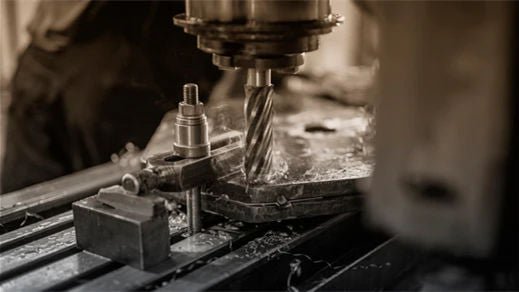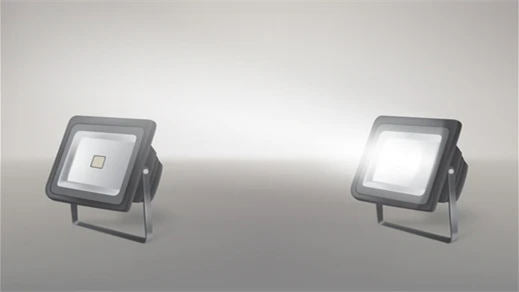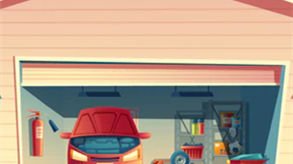Aluminum die casting is a manufacturing process in which molten aluminum is injected into a mold cavity under high pressure. This technique allows for the creation of intricate, complex, and precise metal parts that are durable and lightweight. The molds used in this process, often made from hardened steel, are capable of producing a high volume of consistent parts, making aluminum die casting a cost-effective and efficient production method.
Pros and Cons of Aluminum Die Casting
Pros:
-
Strength and Durability: Aluminum die-cast parts are known for their high strength and durability. They can withstand harsh environmental conditions and are resistant to corrosion, making them ideal for outdoor applications.
-
Lightweight: Aluminum is a lightweight metal, which means that parts made from aluminum die casting are easier to handle and install. This is particularly beneficial for applications where weight is a critical factor, such as in automotive and aerospace industries.
-
Precision and Accuracy: The die casting process allows for the production of parts with tight tolerances and complex geometries. This precision reduces the need for additional machining and ensures that the parts fit together perfectly.
-
Cost-Effective: Once the initial mold is created, the per-unit cost of aluminum die-cast parts is relatively low, especially when produced in large quantities. This makes it an economical choice for mass production.
-
Thermal Conductivity: Aluminum has excellent thermal conductivity, which makes it suitable for applications requiring efficient heat dissipation, such as lighting fixtures.
-
Recyclability: Aluminum is highly recyclable, which makes aluminum die casting an environmentally friendly manufacturing option. Recycled aluminum retains the properties of virgin aluminum and can be reused indefinitely.

Cons:
-
High Initial Cost: The initial cost of creating the molds for die casting can be high. This upfront investment can be a barrier for small production runs or startups.
-
Complexity of Design Changes: Once a mold is made, any design changes can be costly and time-consuming. This inflexibility can be a disadvantage in industries where design iterations are frequent.
-
Limited to High-Volume Production: Die casting is most cost-effective for high-volume production. For low-volume or custom orders, other manufacturing methods like CNC machining might be more appropriate.
Why Should You Choose Aluminum Die Casting Made Light for Outdoor Use?
Outdoor lighting fixtures, such as street lamps, garden lights, and floodlights, must endure a variety of environmental stresses, from extreme weather conditions to physical impacts. Choosing aluminum die casting for these fixtures offers several significant benefits:
-
Durability and Weather Resistance: Die-cast aluminum is exceptionally durable and can withstand harsh weather conditions, including rain, snow, and high temperatures. Its natural corrosion resistance ensures that the lights maintain their structural integrity and appearance over time, reducing the need for frequent replacements.
-
Lightweight for Easy Installation: The lightweight nature of aluminum makes the installation process easier and safer. This is particularly important for street lights and other fixtures that need to be mounted at height. A lighter fixture reduces the risk of injury during installation and maintenance.
-
Efficient Heat Dissipation: Outdoor lights often operate for long hours, generating significant amounts of heat. Aluminum's excellent thermal conductivity allows for efficient heat dissipation, preventing overheating and extending the lifespan of the light bulbs and electronic components.
-
Aesthetic Appeal: Aluminum die casting allows for the creation of sleek and modern designs. This versatility in design not only enhances the aesthetic appeal of outdoor lights but also allows for the integration of functional elements such as heat sinks and mounting brackets.
-
Cost Efficiency: For large-scale outdoor lighting projects, the cost efficiency of aluminum die casting becomes apparent. The high-volume production capability ensures that large quantities of fixtures can be produced at a lower cost per unit, making it a financially viable option for municipalities and large properties.
-
Environmental Benefits: Using die-cast aluminum for outdoor lighting fixtures contributes to environmental sustainability. Aluminum is highly recyclable, and using recycled aluminum in the die casting process reduces the environmental footprint. Additionally, the longevity and durability of aluminum fixtures mean fewer replacements and less waste over time.
-
Customization and Flexibility: Die casting allows for a high degree of customization. Outdoor lighting fixtures can be tailored to specific requirements, including custom shapes, sizes, and finishes. This flexibility ensures that the lighting solutions meet the unique needs of each project.

Conclusion
Choosing lights made of aluminum die casting for outdoor applications offers a range of benefits, from durability and weather resistance to cost efficiency and environmental sustainability. The aluminum die casting process produces high-quality, lightweight, and aesthetically pleasing fixtures that are well-suited to withstand the demands of outdoor environments. Despite the initial investment in mold creation, the long-term advantages of using die-cast aluminum for outdoor lighting make it a smart choice for both residential and commercial projects. The combination of strength, precision, and recyclability ensures that aluminum die casting remains a leading manufacturing method for high-performance outdoor lighting solutions.


































Leave a comment
This site is protected by hCaptcha and the hCaptcha Privacy Policy and Terms of Service apply.